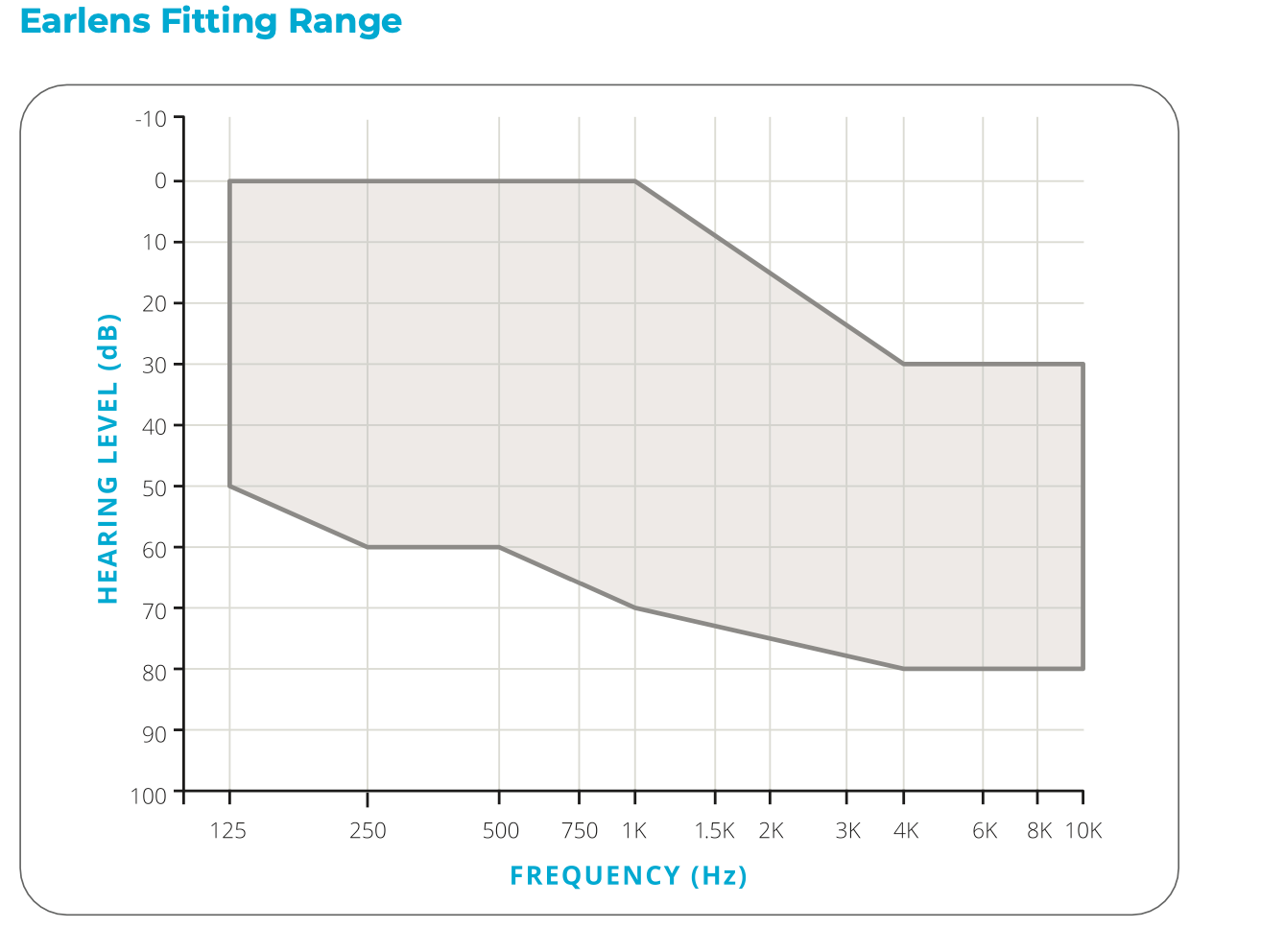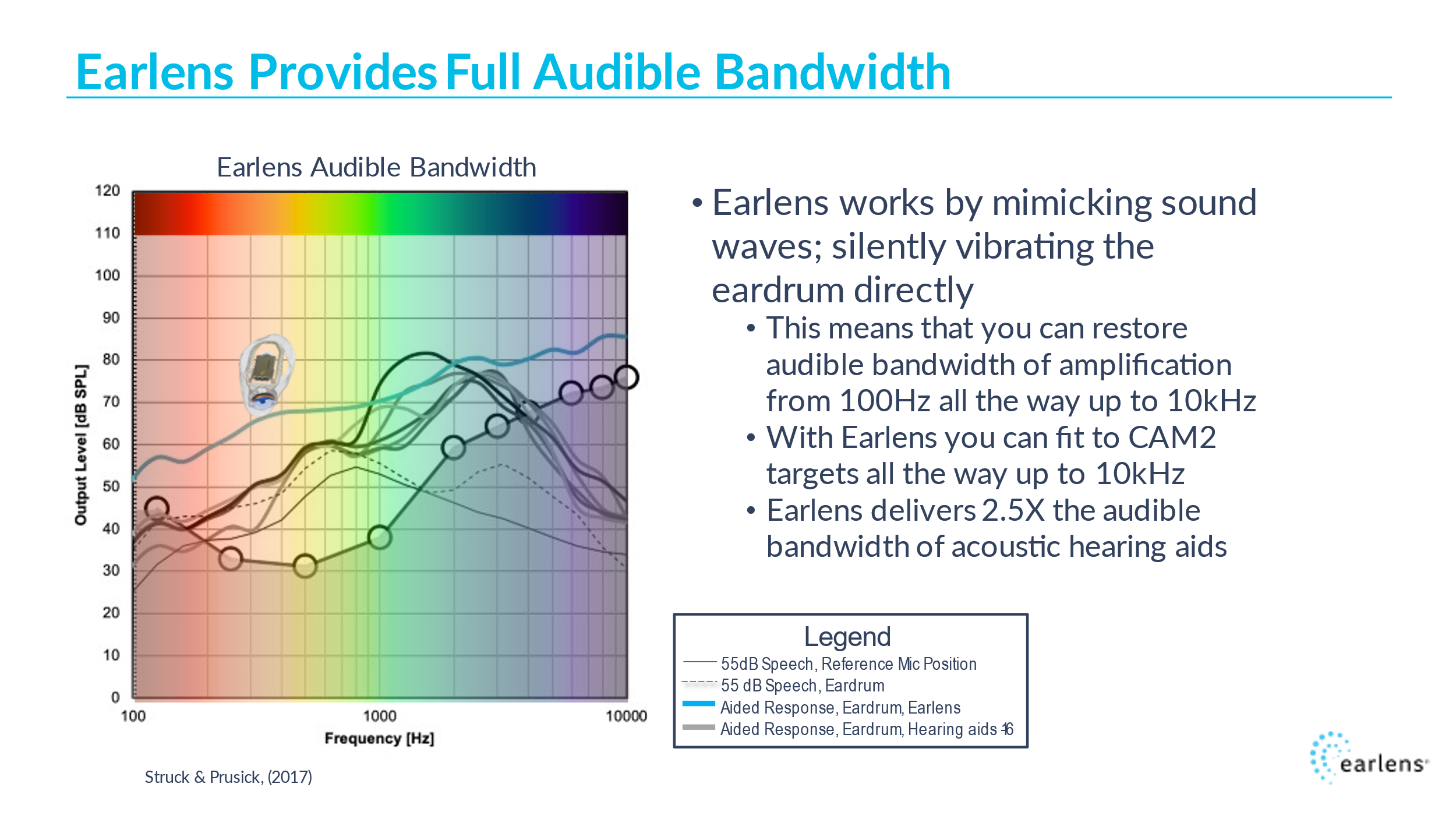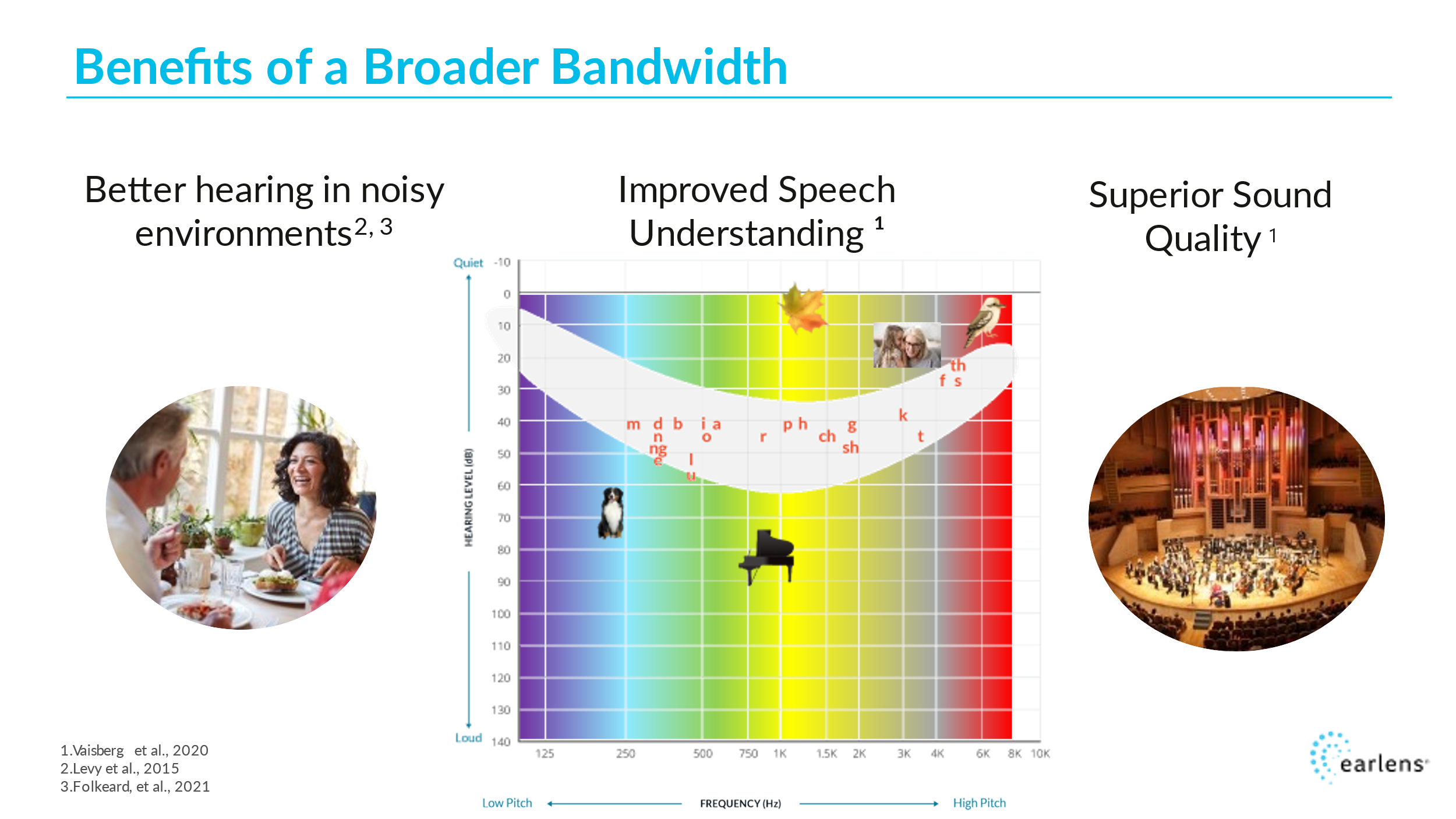Question
Who is a candidate for Earlens?
Answer
Any adult patient (> 18 years of age) with a mild to severe SNHL who has > 50% speech understanding would be a good candidate. We estimate that about 90% of hearing aid users fit into this range. Additionally, anyone who has aidable high frequency hearing at 4000Hz and above is likely to hear and benefit from the extended audible speech information provided by Earlens. In terms of medical candidacy criteria, a normal tympanic membrane and middle ear are needed to effectively transmit that information from the lens through the middle ear system to be received by the cochlea. Earlens also has a demo device for patients who are interested in hearing the difference in sound quality and clarity.

So Why Earlens when hearing aid technology has improved so much in recent years?
Despite all the improvements made with conventional acoustic devices, and there have been many, patients are still not delighted with traditional devices. Looking at the most recent market research, hearing aid wearers’ top two complaints, when asked about satisfaction, are sound quality and understanding speech in background noise. Earlens is the only non-surgical hearing solution that effectively addresses both complaints. In fact, we now have significant data (16+ publications) demonstrating the positive impact of extended audible bandwidth on sound quality, speech understanding, and speech understanding in noise. A game changer!
Because of Earlens’ unique mechanism of action, directly vibrating the eardrum at the umbo of the malleus, it delivers a huge efficiency advantage over acoustic devices. Patients experience low frequency output with wide venting and are able to meet prescriptive targets from 100 Hz to 10 kHz without feedback. They also experience a balanced frequency response that prevents tinniness, sharpness and harshness while retaining broadband audibility. It’s this balance of the lows and the highs that provides the improved naturalness of sound and clarity patients with Earlens enjoy.
Back to the basics, the sole purpose of any hearing aid is to restore the audibility of sound via amplification in the specific impaired sound regions. Afterall, if the patient can’t hear it, it’s not reaching the brain, in turn, they can’t benefit from it. Despite all the improvements we have seen with conventional acoustic devices the audible bandwidth they provide continues to be restricted. This is due, quite simply, to the physics of the receiver and the transmission of sound in air. Indeed, the audible bandwidth of acoustic devices is limited even with less severe hearing loss. Consider that low frequency gain in acoustic hearing devices is restricted due to the need to vent for occlusion and feedback limits gain in the high frequencies. This is seen when acoustic hearing aids are verified using Real Ear measurements. Because Earlens directly vibrates the tympanic membrane at the umbo of the malleus instead of using a receiver to acoustically transmit the signal it is able to deliver audibility from 100Hz to10kHz for those who fall within the Earlens fitting range. That is 2.5X the range of acoustic hearing aids.
The latest courses, as well as videos and other resources, can be found on Earlens Partner Page on Audiology Online. Professionals can also visit the Earlens website, www.earlens.com or to learn about becoming an Earlens provider, please visit https://earlens.com/providers/become-a-provider/



